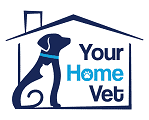Tumorous diseases are not uncommon in dogs. The veterinarian is increasingly making the diagnosis of cancer. Owing to the illness, the owners mostly feel paralyzed and powerless. Thereby there are first therapy concepts and also the possibility to support the dog in this challenging phase by optimal nutrition.
Possible causes of tumor development
Tumors can develop primarily or as metastasis in almost any part of the body. The most common type of tumor is the mammary tumor, but the internal organs, soft tissue, and the blood and lymphatic system are also relatively often affected by this disease. The causes of cancer and benign tumor diseases have not yet been clarified. A genetic predisposition is just as beneficial as environmental influences, chronic illnesses, and the increased life expectancy of dogs. As the immune system weakens with age and the organism loses its ability to repair damage to the DNA, the risk of tumor formation is increased, especially in older dogs.
The starting point of a tumor is a single, changed cell that grows exponentially and becomes palpable or visible as a tissue change from a specific size and depending on the type of tumor. Only by examining the tissue can the cancer be classified as benign or malignant. To do this, a small part of the tissue is removed using a needle or punch, or the tumor is surgically removed and then examined microscopically.
Symptoms and treatment options
The location of the tumour primarily determines the symptoms of cancer. Tumors on the lungs can be noticed, for example, by coughing or shortness of breath, while intestinal tumors can be seen by diarrhea, bloody excretions, or bowel obstruction. Besides, very non-specific symptoms such as loss of appetite, malnutrition, loss of muscle mass, palpable swelling, or persistent lameness often occur.
As a direct therapy option, the priority is, if possible, the surgical removal of the tumor. Also, chemotherapy or radiation therapy can be carried out after an operation and, if necessary, the immune system can be built up using immunotherapy. The choice of the optimal therapy regimen depends on the type of tumor and the stage of the disease.
Supportive influence of nutrition
In addition to the therapy options mentioned, it is also recommended to support the dog with cancer through an adapted diet. Studies have already achieved positive results, strengthened the immune system, and, in particular, improved the quality of life of the patients.
Cancer patients generally have an increased energy requirement, since the tumor branches off part of the energy supplied for its metabolism. Therefore, depending on the stage of the disease, affected dogs often have cachexia, i.e., H. to see a very emaciated appearance. Sufficient energy supply should primarily be ensured through fats since cancer cells are hardly able to use them for their metabolism. The proportion of proteins should also be increased due to the increased need to prevent premature loss of muscle mass. In contrast, a reduction in the carbohydrate content is recommended, since cancer cells obtain the energy for their growth primarily from readily available glucose. For this reason, feeding sugary treats and snacks and some types of fruit is not recommended. In general, care should be taken to ensure that the food components are easily digestible, so the meat content should be low in connective tissue.
Antioxidants such as vitamins C and E are used to build up the immune system and protect the body from free radical damage. Vitamins A and D, as well as zinc and selenium, can also be added to the feed. The polyunsaturated omega-3 fatty acids are also of great importance in the dietetic therapy of tumor patients. They can slow the growth of tumors and reduce the formation of metastases. They also strengthen the body’s defenses and have anti-inflammatory effects. Linseed oil and salmon oil, in particular, are good omega-3 carriers and are therefore particularly suitable as an additive in the diet for a tumor.
Since all dogs are individuals, have different nutritional needs, and, last but not least, differ in terms of their disease, no general feeding recommendation can be given for tumor diseases. Besides, the energy requirement is not generally increased for every sick dog. Therefore, a calculation of the dog’s individual needs based on a professional ration calculation, and based on this, the selection or creation of an optimally adapted feed is recommended. This is the only way to provide a sick dog with the best possible nutrition support.





My dog is 14 yrs old an the last 4mths she as started to bleed an coughing as started to increase